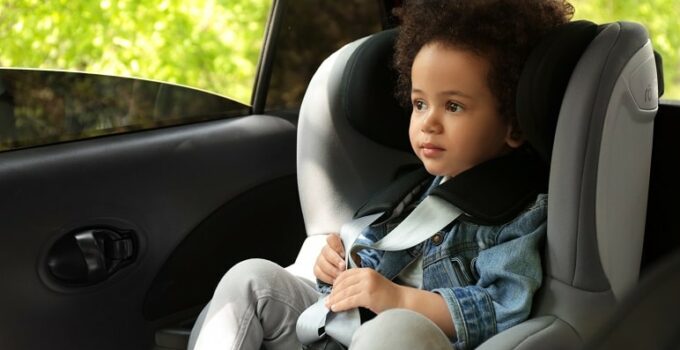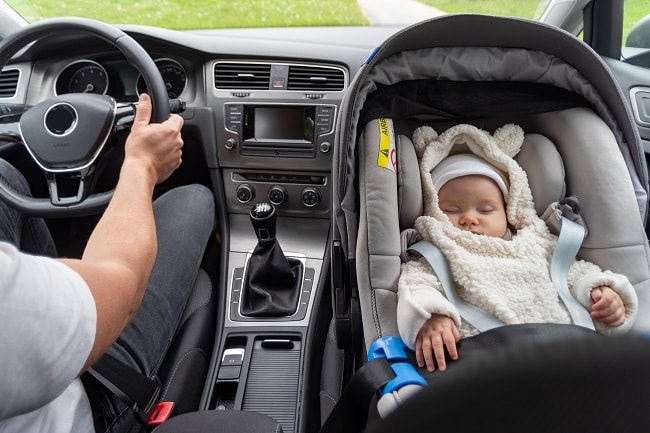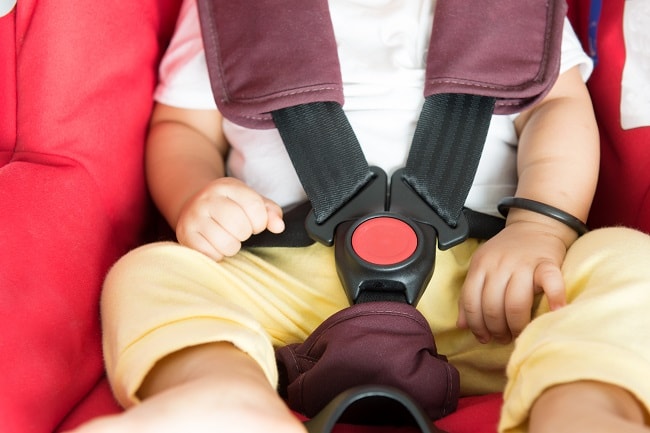
The safe transport of our little ones in the car requires a few precautions. Depending on the age, size and weight of your child, you need a suitable baby seat, a child seat or just a booster seat. In the following article we will explain the options and regulations for child car seats and what a reboarder is. We will also give you all sorts of tips for driving with a baby.
Contents
The right child car seat for age, size and weight
After the birth of your baby, you first need an infant carrier if the child is to be taken home from the hospital in your car. At the same time, this is the first child car seat to accompany you on further journeys with your baby. In the infant carriers, our little ones always sit against the direction of travel. This increases safety in the event of a rear-end collision. It is important to note that it is always best for child safety when the child seat is in the back seat and not in the front passenger seat. If you absolutely want to or have to attach your child seat to the front passenger seat, bear in mind that it can usually only be strapped there. This is due to the fact that in most vehicles there are no so-called ISOFIX fastening eyes on the passenger seat (because these have to be welded to the bodywork). In addition, if there are rear-facing seats on the front passenger seat, the corresponding airbag must be deactivated! However, a corresponding switch-off device must first be installed in some vehicles.

Whenever possible, your children should ride rear-facing, which can be up to 3-4 years of age, depending on the car seat model and their size and weight. For this you need a so-called reboarder as a subsequent seat. Some models of these child seats are also so variable that they can be rotated and thus used both rear-facing and forward-facing. You can generally use the baby seat up to a weight of around 13 kilograms. Most children are then around 15 months old. But be careful: Your child's head must not protrude beyond the child seat, otherwise it may be necessary to switch to a larger child car seat beforehand. The subsequent seats can then be used from 9 to 18 kilograms, i.e. from about one year to 4 years. For forward-facing driving, child seat manufacturers usually state that the child must weigh at least 9 kilograms (according to ECE standard R44/04).
Child seat groups and the modern i-Size standard
Many child seats are still sold today according to so-called child car seat groups (ECE standards R44/04 and R44/03). A distinction is made between four of these groups, namely 0, 1, 2 and 3. Group 0 child seats are generally referred to as baby seats, which small children can still use as long as their body weight does not exceed 13 kilograms. However, always remember that the head must not protrude beyond the seat and that the belts must also run well at shoulder height. Incidentally, you may have to remove any seat reductions in your infant carrier much earlier, depending on the growth and development of your baby.
If the baby seat from group 0 has become too small or you want to switch to a larger seat sooner, you will find what you are looking for in the car seats of group 1 (9-18 kg). These can often be used from one year to about four years. In most cases, these are reboarders. Swivel seats can usually only be used forward-facing from a body weight of 9 kilograms. In group 2 you will find child seats for four to seven year old children with a weight of 15 to 25 kilograms. Group 3, on the other hand, has a weight range of 22 to 36 kilograms, which corresponds to an age of seven to twelve years.
It should also be mentioned here that some new seats are now categorized according to EU regulation R129 using the so-called i-Size standard. This is based on the size of the children and no longer on their body weight. It is important to know that children in i-Size-approved seats are only allowed to drive forward-facing from the age of 15 months. Incidentally, the seat up to a size of 105 cm must first be fixed using ISOFIX.
What is the difference between a booster seat and a real child's seat?
Basically, one always speaks of a booster seat when the child car seat does not have its own belt system. If infant carriers and reboaders or group 0 and 1 seats usually have 5-point belts, the belts built into the car are used for booster seats. The booster seat in the car then has the task of guiding the vehicle belts so that your child sits securely and is optimally protected in the event of an accident.

When can your child ride in the car without a child seat?
In The United Kingdom there are clear rules for when your child no longer needs a child car seat. To do this, it must either have completed the twelfth year of life or its height must have exceeded 150 cm. This is the legal regulation in The United Kingdom. However, we recommend that you carefully consider when driving without a booster seat makes sense.
Frequently Asked Questions (FAQ)
⚠ What is a reboarder seat?
A reboarder is a rear-facing seat. This type of seat offers significantly higher safety in the event of an accident and should be used for as long a period as possible.
⚠ Which reboarders are rotatable?
There are now some child seat manufacturers who offer reboarders that can also be used in the direction of travel. If your child is old (or big/heavy) enough, you can rotate the seat. However, please remember that rear-facing is five times safer.
⚠ From what age can a child without a child seat be allowed in a Sitting in the car?
For this, your child must either have reached the age of twelve (i.e. have celebrated their twelfth birthday) or be taller than 150 cm. Please note that there may be different regulations abroad (also in Europe).
⚠ When can your child sit in the front passenger seat?
With a suitable child seat, possibly after the front passenger airbag has been switched off, your child may, from a legal point of view, also at any time ride in the passenger seat. An exception is usually made with seats approved according to the i-Size standard, because these must be attached using ISOFIX up to the age of fifteen months. However, the corresponding attachments are rarely found on the front passenger seat.
⚠ From what point can a child sit in the front without a child seat?
The legislature does this too no difference between the back seat and the passenger seat. An age of 12 years or a height of more than 150 cm is sufficient. However, it is safer if your child sits in the back.
⚠ Where is the safest place for the child to sit in the car?
The safest place for your child is in the back seat. Again, the middle seat is generally considered the safest position. However, it is much more important that your child rides rear-facing.
Conclusion
Always use one suitable child seat or an appropriate car seat booster to transport your offspring safely. You are not only legally obliged to do so, but it would also be grossly negligent if you took a child with you in the car without appropriate security. Please also remember to make it clear to grandparents and other relatives that even a few meters can be devastating in the event of an accident.
A tip from CarTipsandmore: Always remember that you depending on the registration of your registered office, may be subject to different legal requirements. In addition to the more modern i-Size standard, seats with the ECE standard R44/04 and R44/03 are also permitted, whereas seats with the approvals R44/02 and R44/01 may no longer be used.
